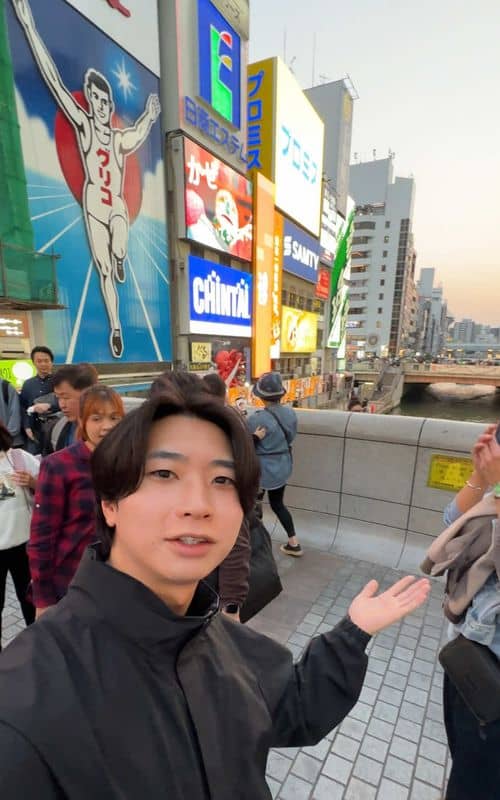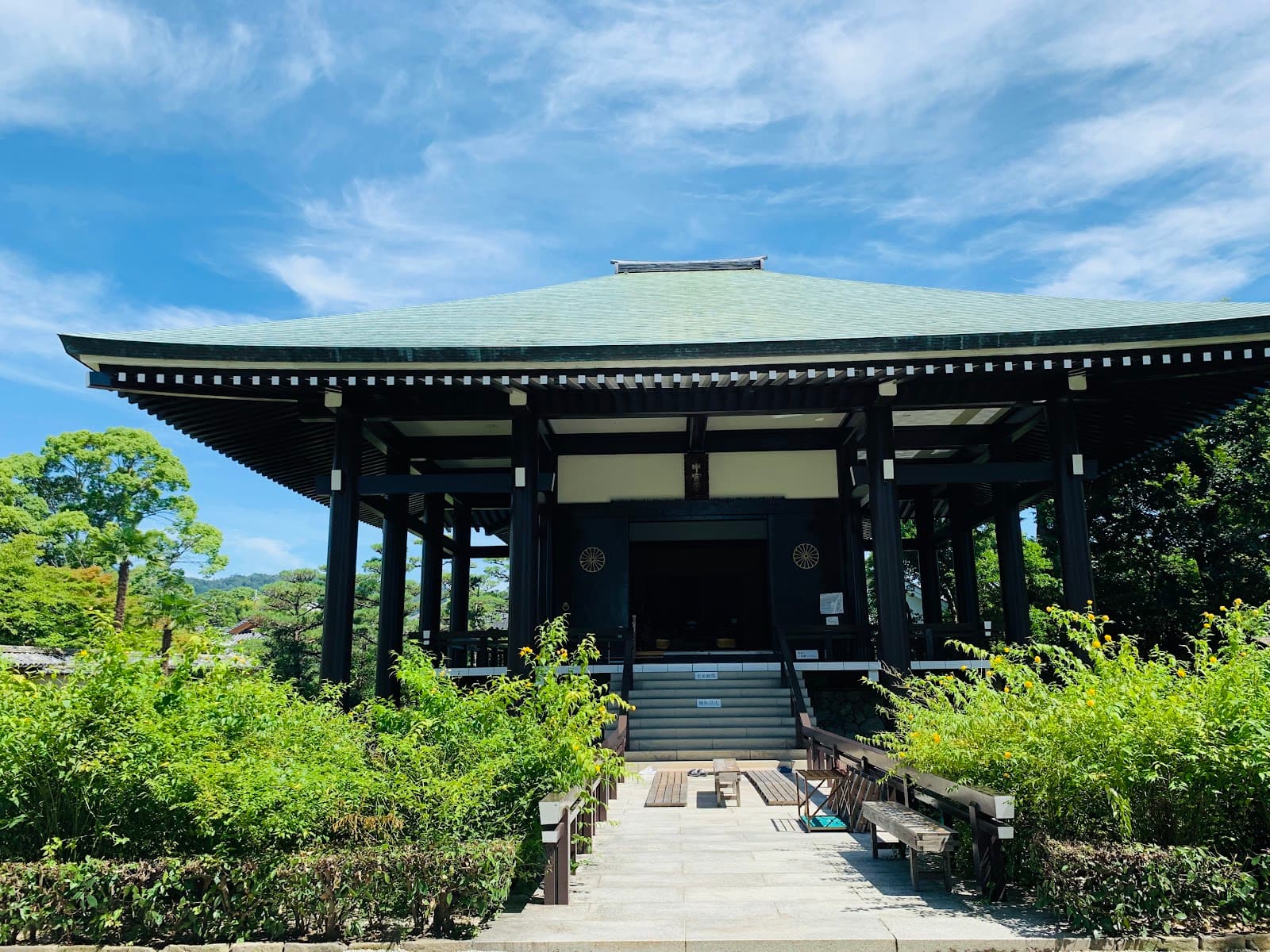
Horyu-ji Osaka
Home to the world's oldest wooden buildings, Horyu-ji is a UNESCO World Heritage site and a testament to ancient Japanese architecture and Buddhist ar...

Highlights
Must-see attractions

Social
From TikTok & Reddit
Best Time
Fewer crowds, peaceful atmosphere

Horyu-ji Osaka
Best Time
Fewer crowds, peaceful atmosphere

Highlights
Must-see attractions
Home to the world's oldest wooden buildings, Horyu-ji is a UNESCO World Heritage site and a testament to ancient Japanese architecture and Buddhist art.
"A truly awe-inspiring glimpse into Japan's ancient past, with structures that have stood for over 1400 years."

Wear Comfortable Shoes
You'll be doing a lot of walking on temple grounds. :athletic_shoe:
Check Opening Hours
Hours can vary seasonally. Plan your visit to make the most of your time. :clock1:

Highlights
Discover the most iconic attractions and experiences

World's Oldest Wooden Buildings
Temple Grounds
Marvel at structures that have stood for over 1400 years, a testament to ancient Japanese craftsmanship.

Sacred Pagoda
Temple Grounds
The iconic five-story pagoda is the oldest wooden structure on Earth, a breathtaking sight.

Vibrant Frescoes
Kondo (Golden Hall)
Discover ancient Buddhist murals depicting scenes from the life of Buddha, remarkably preserved.
Plans like a pro.
Thinks like you
Planning Your Visit
Timing Your Visit to Horyu-ji
Navigating Horyu-ji
Best Times
Insider Tips
from TikTok, Instagram & Reddit
Wear Comfortable Shoes
You'll be doing a lot of walking on temple grounds. :athletic_shoe:
Check Opening Hours
Hours can vary seasonally. Plan your visit to make the most of your time. :clock1:
Consider a Guide
Enhance your understanding of the history and significance of the site. :man_teacher:
Respectful Attire
Dress modestly when visiting this sacred site. :pray:
Tips
from all over the internet
Wear Comfortable Shoes
You'll be doing a lot of walking on temple grounds. :athletic_shoe:
Check Opening Hours
Hours can vary seasonally. Plan your visit to make the most of your time. :clock1:
Consider a Guide
Enhance your understanding of the history and significance of the site. :man_teacher:
Respectful Attire
Dress modestly when visiting this sacred site. :pray:
What Travellers Say
Reviews Summary
Visitors consistently praise Horyu-ji for its incredible historical significance, particularly its status as home to the world's oldest wooden buildings. The serene atmosphere and the impressive collection of ancient art, including frescoes and statues, are major highlights. Some visitors note that certain areas have separate admission fees and photography is restricted inside key buildings.
"A beautiful and historic temple with incredible ancient architecture, it’s amazing to see structures this old still standing. The grounds are peaceful and well-preserved. That said, the entrance fee is quite expensive compared to other temples, which might be a drawback for some. Still, it’s a special place worth seeing if you’re interested in history."
Dani Jones
"It was my university field trip. It was not enjoyable but also packed with historical knowledge experience.
The pagoda and temples were built more than 1400 years ago. This history of this place dates back to when before Nara was the capital of Japan in the 6th century.
Once you step foot into this historical place, you'd feel as if you've been transported into a different era in time.
I wholeheartedly advise everyone to take your time and slowly pace through this place so that you can immerse, feel, and absorb the atmosphere."
Geraldジェラルド
"Please take half day to this gorgeous temple! We been to Nara twice and visited this temple in our second trip to Nara, we were upset why we didn’t visit here earlier.
Once stepping into the gate, we were speechless of how beautiful this temple is! Please don’t miss this place in your trip!"
JC
What People Like
What People Dislike
Frequently Asked Questions
🚇 🗺️ Getting There
To reach Horyu-ji from Osaka, take the JR Yamatoji Line from Tennoji Station to Horyuji Station (approx. 15-20 minutes). From Horyuji Station, it's a short bus ride or a pleasant 20-minute walk to the temple complex.
Yes, Horyu-ji is well-connected by public transport. The JR Yamatoji Line provides direct access from major Osaka stations.
From Nara Station, take the JR Yamatoji Line to Horyuji Station. The journey is about 10-15 minutes. Buses are also available from Nara city.
Yes, there is parking available at Horyu-ji Temple. However, public transport is often more convenient and recommended for tourists.
The train journey from central Osaka (e.g., Namba or Umeda) to Horyuji Station typically takes around 30-45 minutes, depending on transfers and train schedules.
🎫 🎫 Tickets & Entry
Admission fees vary for different areas within the Horyu-ji complex. The main grounds are generally free to enter, but specific buildings like the Kondo (Golden Hall) and the Pagoda may have separate entrance fees. It's best to check the official website for current pricing.
Advance booking is usually not required for Horyu-ji, as it's a historical site rather than a ticketed event. You can purchase tickets for specific buildings on-site.
Horyu-ji Temple is typically open from 8:00 AM to 5:00 PM, with the last admission usually around 4:30 PM. However, hours can change seasonally, so it's advisable to verify them before your visit.
While there isn't always a single 'all-access' ticket, you can purchase tickets for the main treasure halls and museums on-site. Consider which areas you most want to see to plan your ticket purchases.
Discounts are not commonly advertised for general admission. However, group rates might be available for larger parties. Check with the temple administration for details.
🎫 🧭 Onsite Experience
The best way to explore Horyu-ji is on foot, allowing ample time to wander through the various precincts and admire the ancient architecture. Consider visiting the Great Pagoda and the Kondo (Golden Hall) first.
To fully appreciate Horyu-ji, allocate at least 2-3 hours. This allows time to explore the main buildings, gardens, and the treasure house.
Yes, guided tours are often available, providing in-depth historical and cultural context. You can inquire about them at the visitor center upon arrival.
The must-see attractions include the five-story Pagoda, the Kondo (Golden Hall) with its ancient frescoes, and the Great Lecture Hall. The Treasure House is also highly recommended.
While the main paths are generally flat, some areas and buildings may have stairs or uneven terrain, which could pose challenges for visitors with mobility issues.
📸 📸 Photography
Photography is generally prohibited inside the main temple buildings, especially in areas with valuable frescoes and artifacts, to preserve them. Look for signage indicating where photos are permitted.
The exterior of the Pagoda and the Kondo are excellent for photos. The temple grounds offer many picturesque views, especially during different seasons.
Yes, drone photography is strictly prohibited within the temple grounds and surrounding areas due to the historical and cultural significance of the site.
Early morning or late afternoon offers the best light for photography, creating a softer glow and fewer harsh shadows.
Yes, you can photograph the exterior of the ancient wooden structures like the Pagoda and the Kondo from designated areas.
For Different Travelers
Tailored advice for your travel style
👨👩👧 Families with Kids
To make the visit more engaging for younger ones, consider focusing on the visual aspects – the pagoda's height, the colors of any visible murals, and the peaceful temple grounds. Pack snacks and water, as dining options within the immediate temple complex might be limited. Wear comfortable shoes, as there's a lot of walking involved.
🏛️ History Buffs & Culture Enthusiasts
Delve into the stories behind the temple's founding by Prince Shotoku and explore the rich collection of Buddhist art, including the renowned frescoes and sculptures. Understanding the historical context of these artifacts will greatly enhance your appreciation of Horyu-ji's significance.
Deep Dives
In-depth insights and expert knowledge
The Enduring Legacy of Horyu-ji's Architecture
The construction techniques employed, such as the use of interlocking wooden joinery, contributed to their longevity. The climate in Japan, with its distinct seasons and soil acidity, also plays a role in preserving wood. Visiting Horyu-ji provides a unique opportunity to witness architectural marvels that have stood the test of time, making it a significant site for understanding the evolution of Japanese architecture and Buddhist art.
Beyond the iconic structures, the temple complex itself is a testament to early Buddhist temple design in Japan, influenced by Chinese styles. The layout and the placement of buildings reflect a deep understanding of aesthetics and spiritual principles. Exploring the grounds allows visitors to immerse themselves in this historical and architectural grandeur.
Artistic Treasures: Frescoes and Statues
In addition to the frescoes, the temple houses a collection of sacred statues, including the famous Shaka Triad by the sculptor Tori Busshi. These statues are not only religious icons but also masterpieces of early Japanese sculpture, showcasing a blend of Indian, Chinese, and Korean artistic influences. The Treasure House (Horyu-ji Homotsukan) displays many of these invaluable artifacts, offering a closer look at the artistry and devotion of the era.
Visitors are often struck by the serene beauty and spiritual aura emanating from these artworks. While photography is restricted inside the halls to protect these delicate pieces, the experience of viewing them in person is deeply moving and provides profound insight into Japan's rich cultural heritage.






Social
from TikTok, Instagram & Reddit